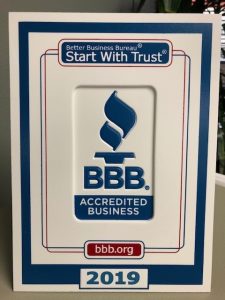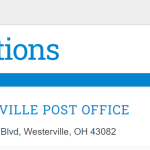How to Create a Marketing Strategy
The Marketing Strategy process involves several steps. These steps include Market analysis, Customer pain points, Competitive analysis, and Marketing mix. Once you have all of this information, you can proceed with developing your marketing strategy. You will be able to better plan your marketing activities and make better decisions for your business. Ultimately, your strategy will make you more successful. Read on to learn more about the steps to create a successful Marketing Strategy.
Market analysis
Market analysis is a crucial part of a marketing strategy because it provides an insight into potential customers and potential uses for the product or service. It also helps a business steer clear of common pitfalls. The question “What job are people hiring your product or service for? competition. You should look at your competitors’ product or service offerings, where they’re located, and who they target. You should also assess their weaknesses and strengths. A SWOT analysis can help you identify these weaknesses and strengths.
A market analysis should also include a summary of target customers, growth trends, and future projections. It should be as concise as possible and tie back to your business goals. If you’re writing for internal use, you can use graphs and tables to make your points easier to understand. This information will give you a clear idea of the type of customers you want to attract.
Market analysis is an important part of any marketing strategy. It will give you valuable information about the market and will help you start your business. will also help you identify opportunities and risks. It will also allow you to develop a marketing strategy and successfully implement your business idea. You can use the data to develop your products and services or find new markets to enter.
You can find accurate market data from several sources, including the U.S. Census Bureau. You can also look up data on various industries using tools like Statista. GlobalData is another good source of information. It provides statistics and reports on more than 15,000 industries, companies, and countries.
Your business plan should also include a section on market size and competitive analysis. You should know how much your competitors are spending and what their potential customers are buying. Knowing the competitors can help you determine strengths and weaknesses in your market and focus your marketing efforts accordingly.
Customer pain points
Identifying customer pain points is an important part of your marketing strategy. Every customer has different pain points, and some do not even realize they have them. Using a customer survey, such as the Pulse Survey, can help you pinpoint the pain points your customers are experiencing, and identify ways to address them.
Pain points are problems that your customers have with a specific product or service. They can be minor, or huge, and can be caused by a wide variety of issues. Some pain points are constant, such as outdated software, and others are temporary. Pain points are also a key indicator of potential customer value, and identifying them can help you design a better product or service.
A customer’s pain points can affect their satisfaction with a company in a variety of ways. A common example is when customers have to pay for unexpected add-ons or services. Other pain points may stem from a crisis that they are facing. Either way, your business must be aware of these issues and come up with a solution that addresses their needs.
Identifying a customer’s pain points is the first step in solving the problem. Customer pain points are problems that a business faces that affect the functioning of the company. In order to determine what the exact pain point is, you must ask the customer directly. This will make you more credible and honest, and will help you understand the customer better.
Another example of a customer pain point is the difficulty of using your product. If your product is difficult to use, customers may abandon the purchase. You must make your product or service easy to use and understand. If your customers can’t get an answer to their questions online, they will be less likely to buy your product or service.
Identifying customers’ pain points is essential for your sales team. This helps them tell the story of how your product can solve their problem. While pain points can vary from one client to another, there are five main categories of pain points. Once you know which category your target audience falls into, you can focus on what benefits your product or service will offer them.
Competitive analysis
The first step in competitive analysis is to identify your competitors. Using a tool like SpyFu, you can identify their website domains, core keywords, and marketing strategies. Once you know who your competitors are, it’s time to figure out how you can best compete with them.
When doing competitive analysis, consider the strengths and weaknesses of your competitors, as well as your own company. Using this information to develop a strategy can help you meet customers’ needs more efficiently and effectively. Competitive analysis isn’t the end of strategic planning, though. You need to use the results to make measurable decisions for your business.
In addition to identifying direct competitors, you should also consider indirect competitors. For example, if Stitch Fix launches a workout line, it could change the market for Fabletics. The market can shift at any time, so it’s vital to perform competitive analysis on a regular basis.
While a thorough analysis of your competitors will not give you the secrets to success, it will help you identify your weaknesses and strengths. With this information, you can make informed decisions regarding your marketing strategy and improve your business. Competitive analysis also provides useful information about your target market and will help you build new markets.
The most successful marketing strategy will include competitive analysis. It includes an understanding of competitors’ business models and how they can be better served. Using competitive analysis as part of your marketing strategy will help you adapt to new trends and keep your business relevant to the customer’s needs. If your competitors aren’t changing their marketing strategies, your business may be in trouble.
When analyzing competitors, be sure to use SWOT analysis. This analysis looks at their strengths and weaknesses, their opportunities, and their threats. In addition to SWOT analysis, you can also conduct a PEST analysis to understand your competitors and how they change over time. A SWOT analysis will help you make informed decisions on how to react to changes in these factors.
Competitive analysis can help you determine which products and services are the best to sell. You can find this information by scouring your competitors’ websites or using tools such as CrunchBase to analyze the company’s market. You can also get basic competitor information by using tools such as competitor profiles and employee counts.
Marketing mix
A marketing mix strategy is an approach to marketing that is intended to get the right product or service in front of the right customer at the right price. It can be used to increase a company’s sales quota, brand awareness, or increase profits. Marketing mix tactics are different depending on the target market and your goals. For example, if you are trying to sell notebooks to university students, you may need to lower the price or switch locations to reach them.
It involves activities such as advertising, public relations, and sales. The promotion must be targeted and have a clear message. It also must be consistent and stick to the product for a defined period of time. Personal selling is another essential element of promotion. It involves creating direct contact with potential customers and building a sense of individuality. This is particularly important when marketing industrial machinery.
An effective marketing strategy will combine all four Ps of marketing to deliver value to your customers. This strategy should provide a good customer experience. The four Ps are interrelated and help establish a firm’s position in the market. However, the 4Ps often under or omit certain important marketing activities. In some cases, services are not explicitly mentioned as products and are classified as services. Packaging is also placed within the four Ps.
Marketing mix includes people, place, price, and promotion. In addition, it involves market research to identify the most effective ways to reach your target audience. Using the right marketing mix model is important to stand out from the competition and deliver better customer experiences. If you are able to implement this strategy, you will be on the path to success.















